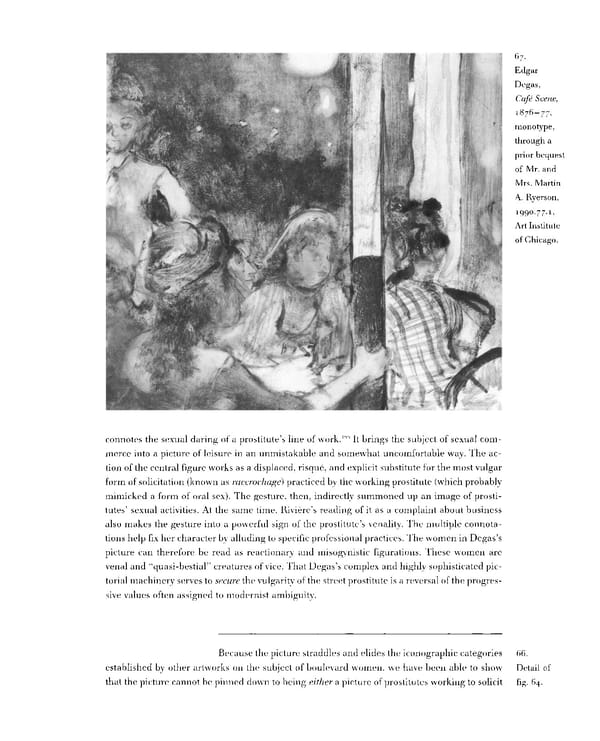6 . 7 Edgar Degas, Cafe Scene, 1876-77, monotype, through a prior bequest of Mr. and Mrs. Martin A. Ryerson, 1990.77.1, Art Institute of Chicago. connotes the sexual daring of a prostitute's line of work.155 It brings the subject of sexual com- merce into a picture of leisure in an unmistakable and somewhat uncomfortable way. The ac- tion of the central figure works as a displaced, risque, and explicit substitute for the most vulgar form of solicitation (known as raccrochage) practiced by the working prostitute (which probably mimicked a form of oral sex). The gesture, then, indirectly summoned up an image of prosti- tutes' sexual activities. At the same time, Riviere's reading of it as a complaint about business also makes the gesture into a powerful sign of the prostitute's venality. The multiple connota- tions help fix her character by alluding to specific professional practices. The women in Degas's r picture can therefore be read as reactionary and misogynistic figurations. These w omen are venal and "quasi-bestial" creatures of vice. That Degas's complex and highly sophisticated pic- torial machinery serves to secure the vulgarity of the street prostitute is a reversal of the progres- sive values often assigned to modernist ambiguity. Because the picture straddles and elides the iconographic categories 66. established by other artworks on the subject of boulevard women, we have been able to show Detail of that the picture cannot be pinned down to being either a picture of prostitutes working to solicit fig. 64.
 Prostitution & Impressionists Page 131 Page 133
Prostitution & Impressionists Page 131 Page 133